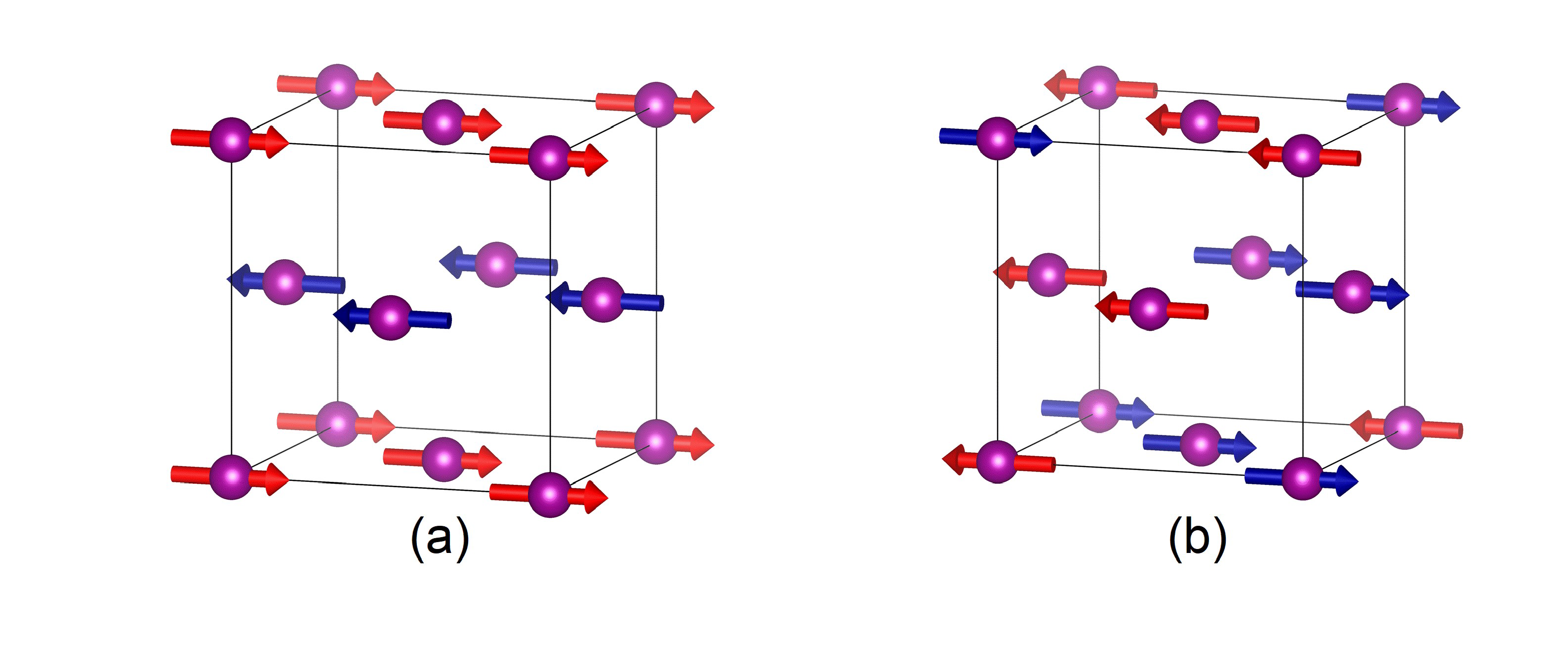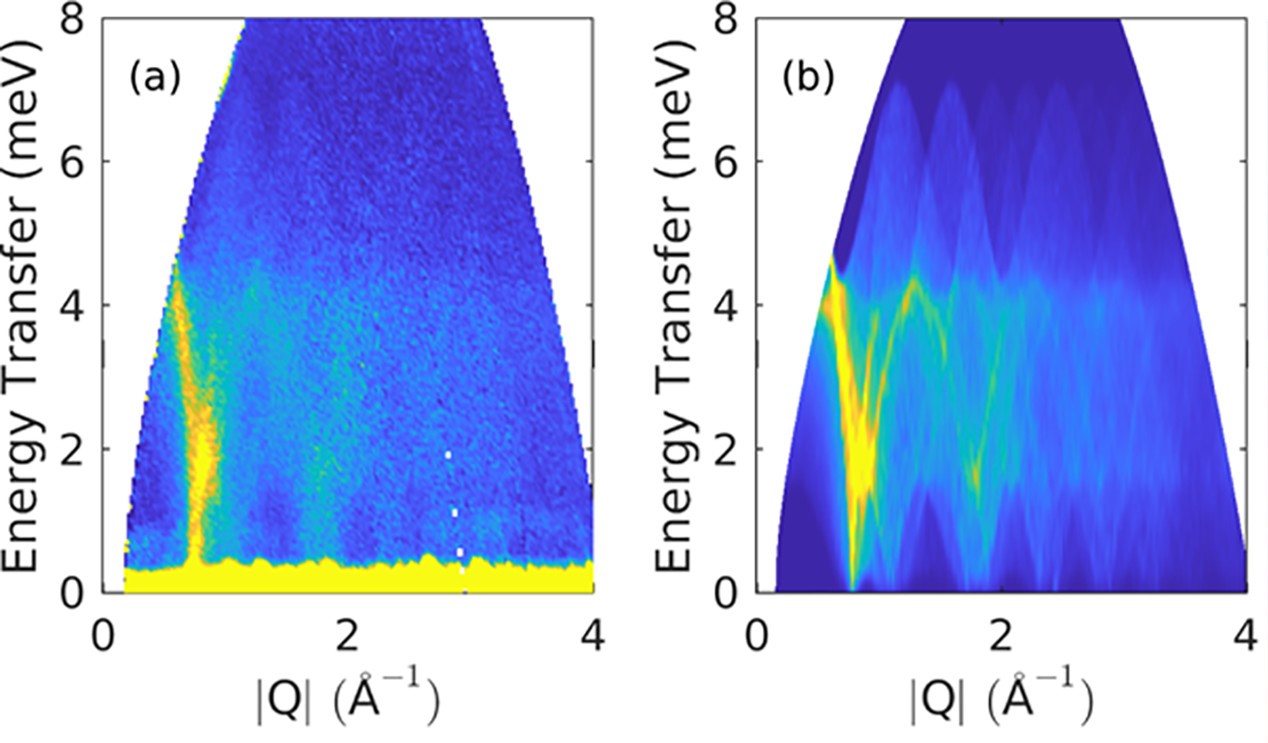Using neutron diffraction on GEM, inelastic neutron scattering on LET and Merlin, muon spectroscopy on EMU and magnetic susceptibility experiments in the Materials Characterisation Lab, the group were able to build a comprehensive picture of the structure and magnetic behaviour of the perovskite materials Ba2MnTeO6 and BaMnWO6. They found that the occupation of the d orbitals in the non-magnetic tellurium (Te) and tungsten (W) ions influences the magnetic interactions that are present. Until now, the effect of non-magnetic cations on magnetic interactions has largely been overlooked.
Group leader, Edmund Cussen, explains; “Magnetic interactions in metal oxides underpin many magnetic and electronic technologies and are determined by multiple competing factors. Some of these effects are relatively weak, but are taking on greater importance as they will be crucial in stabilising new states in materials for spintronic or quantum computing applications."
Double perovskites, described by the general formula A2B'B''O6, have potential uses as spintronic materials, among other applications that depend on subtleties of the crystal chemistry that determine magnetic interactions. This research group focussed on Ba2MnTeO6 and Ba2MnWO6, where A=Ba2+, B'=Mn2+ and B'' is either Te6+ or W6+. Their comparison of tellurium and tungsten enabled them to study the influence of the electron configuration of the ions on the magnetic structure of the material.
Although the two materials Ba2MnTeO6 and Ba2MnWO6 are isostructural, and have almost identical structures, exchanging the tellurium ion for tungsten has a dramatic effect on the magnetic behaviour. This comes down to their positions in the periodic table. As tellurium is in group 16, in its Te6+ form it has ten electrons occupying its outer d-orbitals, and can therefore be described as d10. Tungsten, however, is in group 6, leading to its W6+ form taking the configuration d0.
“We used the advanced diffraction facilities at ISIS to establish that the same crystal symmetry exists in the magnetic systems for two perovskite materials." Adds Dr Cussen; “This geometrically cancelled out many of the stronger magnetic effects and allowed the impact of the empty or full d orbitals of Te and W to take centre stage and 'choose' the most stable magnetic structure. “
Two of the typical magnetic structures for B-site ordered double perovskites are Type I and Type II antiferromagnetic order as illustrated in the diagram below.

The researchers found that, in Ba2MnTeO6 at low temperature, the manganese ions (Mn2+) are arranged in a cubic structure, forming a Type I magnetic structure. Above 20 K, the group's inelastic neutron scattering and muon spectroscopy experiments showed that the material undergoes a transition to form a short-range correlated magnetic state similar to that seen in MnO.
However, when studying Ba2MnWO6, they found that it takes the Type II structure. This is likely to be because the empty d orbitals on the W6+ ion can interact with the orbitals on the oxygen ions, creating a mechanism for extending superexchange through the structure and allowing magnetic interactions between next-nearest Mn2+ cations to dominate. Inelastic neutron scattering was used to determine the magnetic interactions in the materials. The figure below, reproduced from DOI 10.1021/acs.chemmater.0c02971, shows: (a) Measured spin wave spectrum of Ba2MnTeO6. (b) Simulated spin wave spectrum.

The group's studies not only inform the study of these perovskites, but the influence of the empty d orbitals could also be occurring in other magnetic systems, says Dr Cussen; “Many electronic applications such as sensing, data storage and information processing rely on exploiting transitions between states. The facilities at ISIS have allowed us to quantify the impact of chemical control arising from non-magnetic ions. We can use this as a tool to tweak materials composition so that they lie on the cusp of transition and may be switchable into new states."
He adds; “This work relies on materials synthesis, crystal structure measurements, heat capacity, magnetometry as well as multiple neutron scattering and muon relaxation measurements. The facilities at ISIS are key to the experiments and this work relied on a diverse team. The resources provided at ISIS: neutrons, muons and the materials characterisation lab, are key to almost every aspect of the work."
Further information
Article in Physical Review Materials characterising Ba2MnWO6, available at DOI: 10.1103/PhysRevMaterials.4.014408
Article in Chemistry of Materials characterising Ba2MnTeO6, available at DOI: 10.1021/acs.chemmater.0c02971
